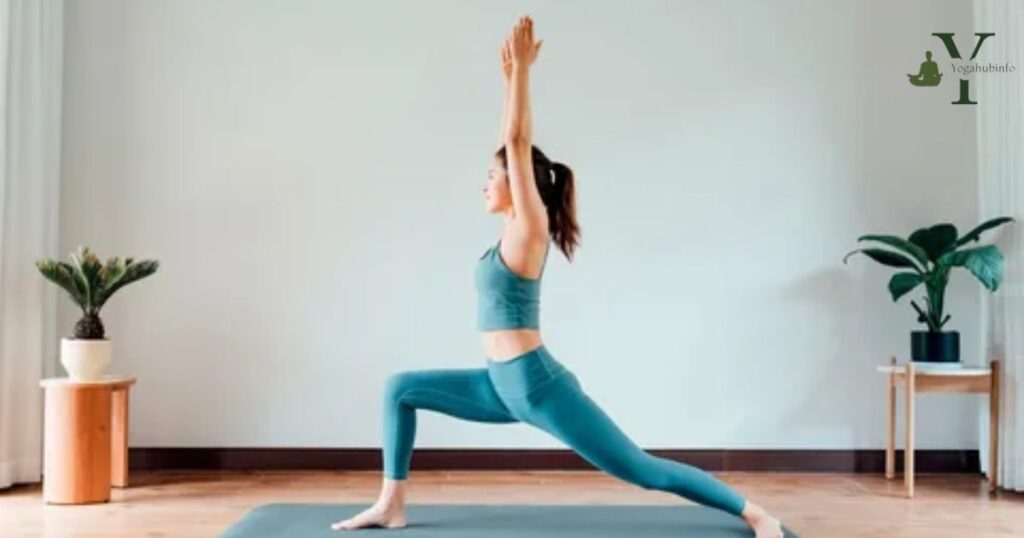Answer .Yoga is often more beneficial after a workout as it helps with flexibility and relaxation. However, individual preferences and goals may influence whether it’s done before or after.
Yoga before a workout primes muscles and boosts flexibility, lowering injury risks. Post-workout yoga aids muscle recovery and reduces stiffness. Pre-workout, it cultivates focus and a positive mindset. Overall, combining yoga with exercise nurtures both physical and mental well-being.
Unlock the ultimate fitness synergy with yoga a game changer before or after your workout. Experience a holistic approach to wellness that complements and enhances your exercise routine. Elevate your strength, flexibility, and inner peace effortlessly. Revolutionize your fitness journey with the power of integrated yoga practice.
Yoga before a workout can enhance flexibility and focus, preparing your body for physical activity. It helps loosen muscles and improves circulation, reducing the risk of injuries during exercise. On the other hand, practicing yoga after a workout promotes relaxation, aids in muscle recovery, and contributes to overall well-being. Whether before or after, incorporating yoga into your fitness routine offers a holistic approach to a healthier lifestyle.
Best Time for Yoga: Before or After a Workout?
| Aspect | Yoga Before Workout | Yoga After Workout |
| Flexibility | May enhance flexibility, preparing muscles for exercise | Aids in stretching and relaxing muscles post-exercise |
| Warm-up | Serves as a gentle warm-up for the body | Can be used as a cool-down, gradually lowering heart rate |
| Injury Prevention | May reduce the risk of injuries by improving flexibility | Assists in preventing muscle stiffness and soreness |
| Focus and Mindfulness | Promotes mental focus before engaging in physical activity | Helps in transitioning from a high-intensity workout |
| Stress Reduction | Can help alleviate stress and anxiety before a workout | Provides a calming and stress-relieving session |
| Energy Boost | Offers an energy boost, potentially enhancing performance | Can aid in relaxation and recovery, reducing fatigue |
| Posture Improvement | Improves posture awareness before engaging in exercises | Reinforces good posture habits after a workout |
| Muscle Activation | Activates and engages various muscle groups | Encourages muscle relaxation and recovery |
| Cool-down | Acts as a prelude to the main workout | Can serve as part of the cool-down process |
| Overall Fitness | Complements overall fitness routine | Integrates well into a comprehensive fitness program |
Some people wonder when is the best time to do yoga before or after a workout? It’s a common question with varied opinions. One school of thought suggests that doing yoga before a workout helps in warming up the body and preparing it for more intense exercises.
On the other hand, some prefer practicing yoga after a workout. They believe that yoga serves as a great cool-down session, helping to stretch and relax the muscles after a strenuous exercise routine. This can contribute to better flexibility and reduce the risk of injuries.
The best time for yoga depends on personal preferences and fitness goals. Some individuals may find a combination of both – a bit of yoga before and after a workout – to be the ideal approach. Experimenting with different timings can help discover what works best for an individual’s body and overall well-being.
Why Do Yoga After a Workout?

After a workout, your muscles might feel tight and tense. Yoga helps to stretch and lengthen those muscles, promoting flexibility and preventing stiffness. It allows your body to cool down gradually, reducing the risk of injury and promoting a sense of relaxation.
Yoga also focuses on deep breathing and mindfulness. After an intense workout, taking the time to connect with your breath and be present in the moment can help calm your nervous system. This mental relaxation complements the physical benefits of your workout and contributes to overall well-being.
Incorporating yoga after a workout aids in balance and stability. The various poses engage different muscle groups, enhancing coordination and proprioception. This not only improves athletic performance but also reduces the likelihood of falls or injuries in everyday activities. Making yoga a post-workout routine brings a holistic approach to fitness.
That Are the Benefits of Doing Yoga on Rest Days
Rest days are crucial for recovery, allowing our bodies to heal and recharge. Engaging in yoga on these days brings a unique set of benefits. Unlike intense workouts, yoga offers a gentle yet effective way to maintain physical activity while promoting relaxation.
Physical Benefits of Yoga on Rest Days
Yoga on rest days enhances flexibility, easing muscle tightness and preventing stiffness. It promotes better posture, reducing the strain caused by prolonged sitting. The gentle stretches improve blood circulation, aiding in the removal of toxins and reducing inflammation. Additionally, yoga’s focus on controlled breathing enhances lung capacity and overall respiratory function.
Mental and Emotional Well-being through Yoga on Rest Days
Beyond physical benefits, yoga on rest days fosters mental clarity and emotional balance. The practice encourages mindfulness, helping to alleviate stress and anxiety. By incorporating meditation and relaxation techniques, it promotes better sleep quality, ensuring that rest days contribute not only to physical recovery but also to mental and emotional well-being.
5 Yoga Benefits That’ll Get You on the Mat How Long Should

Yoga proves to be an excellent method for stress reduction and enhancing body awareness. Incorporating regular yoga classes into your routine not only contributes to these benefits but also offers several additional advantages:
Enhances flexibility and functional fitness
- Engaging in yoga poses promotes increased flexibility over time. Moreover, yoga enhances functional fitness, aiding in various aspects of everyday life. A 2016 study demonstrated that yoga is comparable to stretching and strengthening exercises in improving balance, strength, and mobility.
Builds strength
- Many yoga styles incorporate weight-bearing poses that effectively build strength and muscle mass. This aspect is particularly advantageous for individuals like runners and cyclists seeking a full-body, low-impact workout.
Improves focus and cognition
- The concentration required during yoga practice can positively impact cognitive function, as suggested by a 2015 research review. Sharpening focus on the mat may lead to real-life cognitive gains.
Supports joint and connective tissue health
- Yoga plays a role in increasing or maintaining joint range of motion while simultaneously strengthening the surrounding muscles. This dual action is beneficial for joint and connective tissue health.
Maintains healthy bones
- Even short daily yoga sessions can contribute to bone health, as evidenced by a 2016 study. Just 12 minutes of daily practice proved beneficial for the bones of long-time yoga practitioners.
You Practice Yoga After a Workout?

Should you do yoga after a workout?
Yes! Yoga is a great way to cool down after a workout and help your muscles recover. It can also improve your flexibility and range of motion.
Here are some of the benefits of doing yoga after a workout
- Improved flexibility: Yoga helps to lengthen and stretch your muscles, which can improve your range of motion and make it easier to move around.
- Reduced muscle soreness: Yoga can help to reduce muscle soreness by increasing blood flow and flushing out lactic acid.
- Improved stress relief: Yoga can help to relax your mind and body, which can help to reduce stress and improve your overall well-being.
- Better sleep: Yoga can help you to fall asleep faster and sleep more soundly.
So, next time you finish your workout, consider taking a few minutes to do some yoga. Your body will thank you for it!
Should I Do Yoga Before or After Strength Training?
To maximize the advantages of your workout, it’s recommended to incorporate yoga after your strength training session. This practice aids in cooling down and elongating fatigued muscles. While yoga can be done before strength training, its efficacy is notably higher when performed post-weight lifting.
The primary rationale behind this lies in the fact that yoga facilitates the elongation of muscle fibers, diminishing their capacity for contraction. The contraction process is pivotal for muscle mass development. If your muscles are less proficient in contracting, the muscle-building process may not be as efficient.
For those inclined to practice yoga prior to weight lifting, it’s advisable to avoid prolonged poses to prevent straining the muscles.
Can I Do Yoga Before a Workout?

Engaging in yoga prior to a workout is a viable choice, particularly if you intend to undertake a high-intensity cardio session thereafter. However, it’s worth noting that you may have limited energy remaining for the subsequent workout.
Incorporating yoga before your workout provides a gentle transition that doesn’t overwhelm you from the start, preventing premature fatigue. Additionally, it serves as an effective warm-up, reducing the risk of injuries and facilitating better blood and oxygen flow to your muscles. If you opt for yoga as a warm-up, choose a more dynamic style like vinyasa flow, avoiding static stretches or hatha yoga before jumping into your main workout, as these may not adequately prepare your muscles.
When embracing a more energetic form of yoga, it’s crucial not to approach it too vigorously, ensuring you preserve ample energy for your primary workout. While yoga can indeed precede a workout, it is most beneficial on days when you prefer a gradual introduction to your cardio or strength training session. Nonetheless, for optimal results, consider incorporating yoga into your routine after completing your main workout.
Can I Do Only Yoga for Exercise?
Yoga stands as a self-sufficient workout, independent of any prerequisite or follow-up exercise. If your fitness preferences lean towards lower intensity compared to rigorous cardio or strength training, yoga offers an excellent alternative.
Incorporating yoga into a lifestyle that includes regular walking and a balanced diet can contribute significantly to maintaining or enhancing physical well-being. This practice yields numerous health advantages, such as enhanced strength, improved stability, increased muscle mass, and potential weight loss, depending on your fitness objectives.
For those aiming to center their fitness regimen around yoga without succumbing to monotony, exploring various types like hot yoga, hatha yoga, and vinyasa yoga can be beneficial. While yoga can substitute for other workout forms, consistency is key for tangible results.
Commit to a minimum of three yoga sessions per week, each lasting at least 20 minutes. Allow one day a week for recovery, opting for light activities such as walking or gentle stretching if you wish to remain active on recovery days.
Embarking on a regular yoga routine is simplified through participation in my 10-day yoga challenge. Secure FREE access by completing the form below and kickstart your journey to a more balanced and invigorated lifestyle.
Frequently Asked Questions
1. Should I practice yoga before or after a workout?
- Engaging in yoga before a workout can enhance flexibility and focus, while practicing it afterward aids in post-exercise relaxation and muscle recovery.
2. Is it okay to do intense workouts after a yoga session?
- Yes, combining yoga with high-intensity workouts is beneficial, as yoga primes the body, improves mobility, and helps prevent injuries during intense physical activity.
3. How long should I wait between yoga and a workout?
- Ideally, a 10 to 15-minute gap is recommended between yoga and a workout to allow for a smooth transition and to maintain the benefits of both practices.
4. Can I do yoga on the same day as
- Absolutely, integrating yoga and weightlifting on the same day is effective for promoting balance, flexibility, and reducing muscle soreness associated with weight training. pre or post-workout?
5. Are there specific yoga poses better suited for weightlifting?
- Yes, dynamic poses like Sun Salutations are excellent for pre-workout warm-ups, while restorative poses such as Child’s Pose and Savasana are ideal for post-workout relaxation and recovery.
Final Thoughts
Whether to practice yoga before or after a workout depends on individual goals and preferences. Engaging in yoga before a workout can enhance flexibility, balance, and focus, priming the body for more effective exercise. On the other hand, practicing yoga post-workout can aid in muscle recovery, reduce tension, and promote a sense of calm. Considering one’s fitness objectives and personal preferences is crucial in determining the optimal sequencing of yoga and exercise.
The key lies in finding a balance that suits individual needs. For those aiming to improve performance and prevent injuries, incorporating yoga before a workout may be beneficial. Conversely, individuals prioritizing relaxation and recovery may find post-workout yoga more fitting. Flexibility in one’s approach and an openness to experimentation will help determine the most suitable routine for overall well-being.
The choice between pre or post-workout yoga is subjective, and there is no one-size-fits-all answer. It’s essential to listen to the body’s signals, adjust routines accordingly, and embrace the flexibility that yoga itself promotes. Whether it’s enhancing the warm-up, aiding recovery, or simply fostering mental clarity, integrating yoga into a fitness routine can contribute positively to overall health and fitness goals.
Elevate your fitness with clarity on whether to practice yoga before or after a workout. Find the perfect balance for enhanced flexibility and overall well-being.

Marcus Evergreen, with 8 years of yoga expertise, is the author behind yogahubinfo.com, sharing insights and wisdom in holistic well-being.











